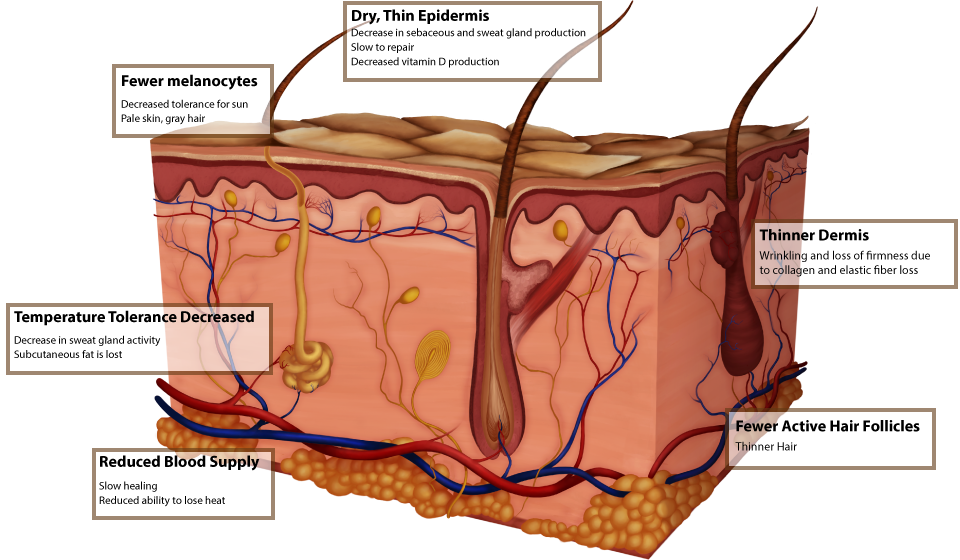Aging and the Skin
As we age, everything about the skin seems to decrease. The regeneration ability of the skin reduces, causing thinner skin. The accessory structures also have lowered activity, generating thinner hair and nails, and reduced amounts of sebum and sweat. A reduced sweating ability can cause some elderly to be intolerant to extreme heat, so be careful to carry water with you. Other cells in the skin, such as melanocytes and immunological cells also become less active, leading to a paler skin tone, white hair and lowered immunity. Wrinkling of the skin occurs due to breakdown of its structure, which results from decreased collagen and elastin production in the dermis, weakening of muscles lying under the skin, and the inability of the skin to retain adequate moisture.

Figure 3. Aging Skin. In aging skin the epidermis becomes dry and thin, wrinkling occurs due to collagen and elastic fiber loss, temperature tolerance is decreased, there are fewer melanocytes, reduced blood supply and fewer active hair follicles.
Skin Repair
Two kinds of wound-healing processes can occur, depending on how deep the injury is in the skin. Epidermal wound healing occurs following superficial wounds. The epidermal layer will typically return to normal function. An example of an epidermal wound is a paper cut. Deep wound healing occurs when an injury extends to the dermis and subcutaneous layer. Loss of some function and development of scar tissue is the rule. An example of a deep wound would be injuries that leave scars whether they are from surgery, imbalance, or a lack of common sense. The skin does have a lot of collagen in it (lab models of dermis often have lots of noticable pink fibers), which needs Vitamin C to develop its functioning structure. Smoking interferes with collagen's proper development and can slow down would healing.


